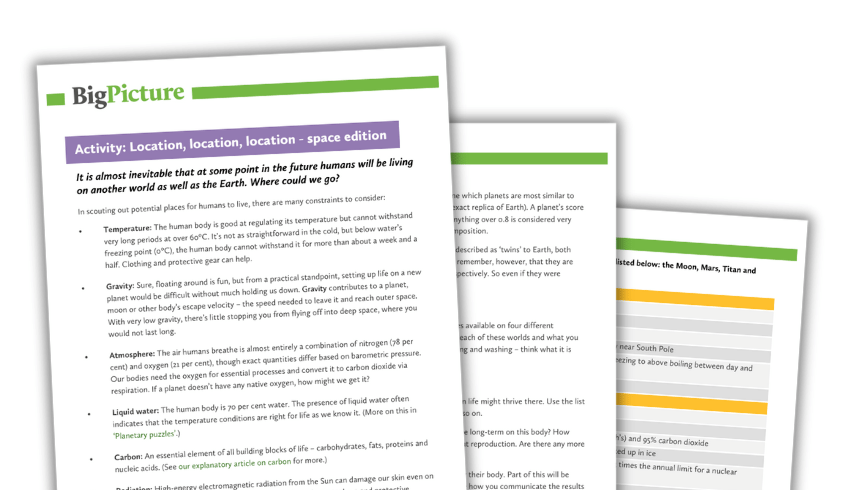In this Earth Similarity Index activity, pupils look at a brief selection of details about the conditions and resources available on four different planetary bodies.
They need to think about the challenges they would face on each of these worlds and what they might need to survive. (Note: water is good for more than drinking and washing – think what it is made of.)
Earth Similarity Index
It is almost inevitable that at some point in the future humans will be living on another world as well as the Earth. Where could we go?
In scouting out potential places for humans to live, there are many constraints to consider, including:
- Temperature
- Gravity
- Atmosphere
- Liquid water
- Carbon
- Radiation
Some scientists use the Earth Similarity Index (ESI) to determine which planets are most similar to Earth.
The index runs from 0 to 1 (1 being an exact replica of Earth). A planet’s score is based on radius, density, escape velocity and temperature. Anything over 0.8 we consider very high – that planetary body is very likely to have a rocky composition.
In 2014, scientists spotted two planets described as ‘twins’ to Earth, both with a high ESI. However, they are very, very far away – 4,700 light years and 11,900 light years, respectively. So even if they were perfect for humans, how would we all get there?
Wellcome is a global charitable foundation established in 1936. Through its work it supports science to solve the urgent health issues facing everyone. Browse more resources for World Space Week.











